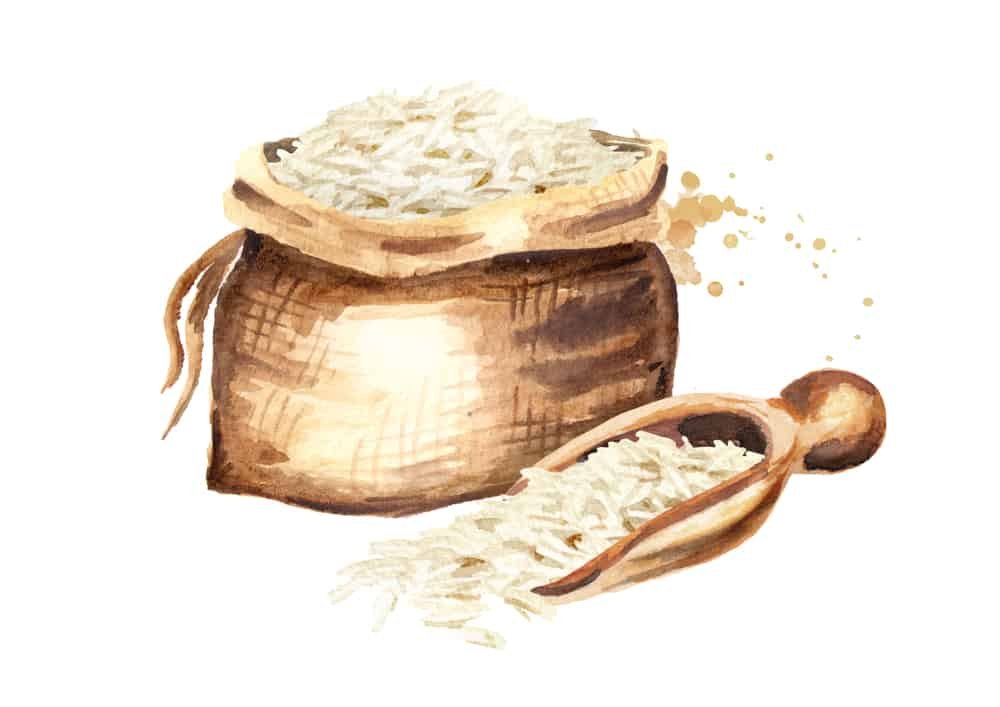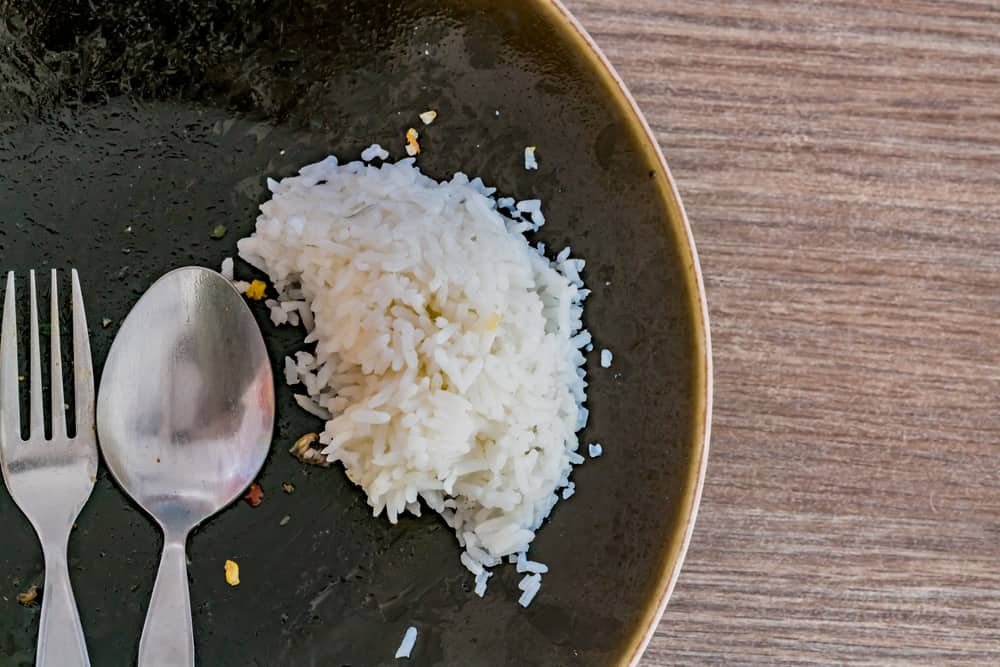
Have you ever given much thought to whether or not the rice on your plate is actually good or bad for you? Probably not! Most people simply buy what they have eaten their whole lives and give little thought to the possible disadvantages of the foods they put inside them. Are you one of those people? You might be!
Rice is a staple food source for billions of people across the globe. In fact, there are over 40,000 varieties of rice in the world. Among all of those varieties, white rice typically gets a bad rap when compared to brown rice, but why? What’s so bad about white rice?
While rice is a go-to for many of us, it’s not always a great choice – especially in its white processed form. There are a number of reasons why white rice isn’t particularly good for you. But, don’t worry – you don’t have to give up your white rice… just practice moderation. Many people opt for brown rice or other forms of starch over white rice, for the following reasons.
15 disadvantages and drawbacks of eating white rice:
1. Less fiber means greater risk of constipation.
White rice, because of the processing that it undergoes to prolong its shelf life span, has very little fiber value. This can lead to constipation, especially if white rice is eaten daily.
2. High glycemic index means increased blood sugar.
White rice has a high GI (Glycemic Index). This is the measure of how quickly your body processes and converts the carbs into sugars, which are then absorbed into the body via the bloodstream. When it comes to GI, the measurement scale ranges from 0 to 100. A low GI is a score of 55 or less, a medium GI is a score of 56 to 69, and a high GI is a score of 70 to 100. Foods with high GI cause rapid sugar spikes, which can lead to diabetes and, of course, unhealthy blood sugar fluctuations. White rice has a GI of 73 ± 4.

3. Simple carbs in white rice can lead to obesity.
It should come as no surprise that white rice is linked to obesity. This is because it is a high-carb food that is highly refined. The fiber content of the food is essentially removed. Diets with a high intake of refined carbs can lead to obesity and chronic disease.
4. White rice is highly processed, leading to empty calories.
While white rice tastes good and will leave you feeling full, there’s not that much exceptional nutritional value in the rice. White rice has been mostly stripped of its nutrient profile, but there are some white rice types that are enriched with vitamins and minerals.
5. Rice is filling, leaving little room for other grains and veggies.
Rice is typically eaten because it is filling, but that often puts a person’s health at risk. When a large portion of rice is eaten, fewer nutrient and vitamin-rich vegetables are eaten.
6. Viscous starch can lead to discomfort and indigestion.

The starch in rice is viscous, which means that it is quite sticky and binding. When eaten, the rice removes the mucus within the stomach by binding to it and weakening its response to acid and pepsin. This means that eating white rice can lead to stomach ulcers and heartburn, in some cases.
7. Eating white rice while trying to lose weight is counterproductive.
If you are trying to follow a strict diet and lose weight, opt for higher fiber brown rice or completely cut rice out of your diet. Rice can increase your blood sugar and is a high-carb food, which can lead to the gaining of fat.
8. White rice can increase your risk of metabolic syndrome.
There’s a group of risk factors that increase your potential to get heart disease, stroke, or type 2 Diabetes…this is called Metabolic Syndrome. The risk factors include obesity, high blood sugar, high blood pressure, and high triglyceride levels. It has been found that people who eat large portions of white rice on a regular basis are more prone to these Metabolic Syndrome conditions.
9. Possible high levels of arsenic in white rice can lead to cancer and heart disease.
Unfortunately, some rice sources lead to arsenic contamination. When compared to other food crops, rice crops absorb the most arsenic, usually from the water source or the soil. When eating food sources with high arsenic build-up, you stand a greater chance of getting heart disease and cancer. Jasmin and Basmati rice are known to have lower levels of arsenic than other rice types.
10. White rice is delicious, which leads to over-eating.
It’s hard not to love the taste of rice. Curry and rice, stir-fried rice – how can you resist a second bowl, right? The problem with this is that rice is such a versatile and tasty food that it often leads to over-eating, …which is unhealthy.
11. Incorrectly stored cooked rice leftovers can poison you.
Certain bacteria love to grow on cooked rice stored at room temperature. These bacteria can actually poison you. If you get food poisoning after eating cold leftover rice, you know why! To avoid this, make sure that you re-heat any rice leftovers right up to cooking heat point again. Also, store cooked rice in a sealed container in the fridge to deter the growth of any bacteria that survived cooking.

12. White rice is low in protein.
Rice is a high-carb food even though it does have protein content. White rice, in particular, has a very low protein content. One cup of cooked white rice has around 4.3g of protein.
13. Cooking white rice correctly takes a long time.
Rice isn’t quick to cook. If you want to whip up a quick, nutritious meal for the family, rice won’t be part of it. Rice takes around 20 to 30 minutes to thoroughly cook. If you want to use rice in a meal, make sure that you have enough time to cook it properly.
14. Eating white rice can lead to allergies.
There are many people in the world who are allergic to rice proteins. If you are allergic to white rice, you might have an itchy and runny nose. You will sneeze, have a skin rash, a stomach ache, and might even swell up too. Some people with a serious rice allergy can have difficulty breathing.
15. Starch and carbs leave you feeling full…short term.
The thing about rice being a high-carb food is that it is quite filling. When eating a rice-based meal, you will undoubtedly feel full and get a lot of calories to count. Unfortunately, carbs provide short-term hunger relief, leading to the need for a second meal or snacking along the way. This often leads to overeating and obesity. A high protein diet is best for quelling hunger pangs and ensuring that you don’t over-eat and put on weight.
All things considered
Just because there are a number of disadvantages and downsides to eating white rice, it doesn’t mean that you have to give up your beloved bowl of rice. Simply switch to brown rice or follow a balanced diet that allows for a few portions of rice per week, instead of every single day.
By understanding the poor health implications of what you eat, you can ensure that you make better food choices. After all, how healthy you eat today will determine just how healthy and fit you are in the coming days, weeks, months, and years.


